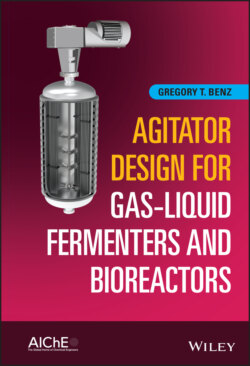Читать книгу Agitator Design for Gas-Liquid Fermenters and Bioreactors - Gregory T. Benz - Страница 75
Effect on Power Draw
ОглавлениеAs mentioned in the first section on flooding, when gas is introduced to a liquid, it affects power draw. At very low gas rates, some impellers actually have an increased power draw. Likely, this is due to increasing the discharge head imposed on the impeller. But at most gas flowrates used in fermenters and bioreactors, gas causes the power to drop.
There are two causes for this drop. One is that some of the gas is entrained, or held up, in the liquid, causing its apparent density to decrease. Remember, from the power number definition, power draw is directly proportional to fluid density. The other cause is that gas pockets may form along the backside of impellers, streamlining the flow, and reducing drag. For flat‐blade turbines, such as the Rushton, this is the major cause of power draw reduction. For deeply concave impellers, the gas pockets are greatly reduced or even eliminated. Pockets also tend to be smaller on axial flow impellers. We will illustrate these pockets in Chapter 5 under each impeller. For now, note that the gassing factor for deeply concave impellers is usually between 0.85 and 1.0, whereas for Rushton impellers, it can be as low as 0.3. Axial flow impellers generally have gassing factors between these ranges.
